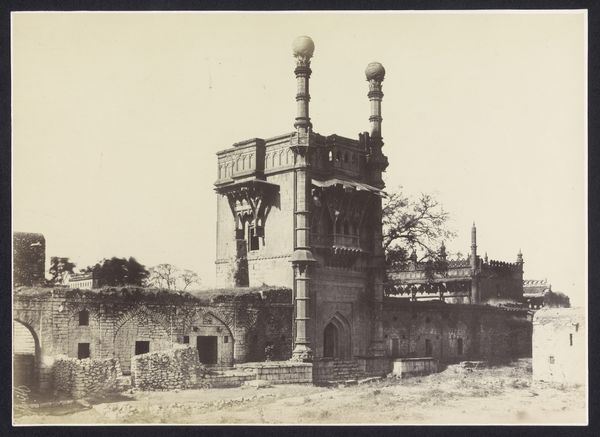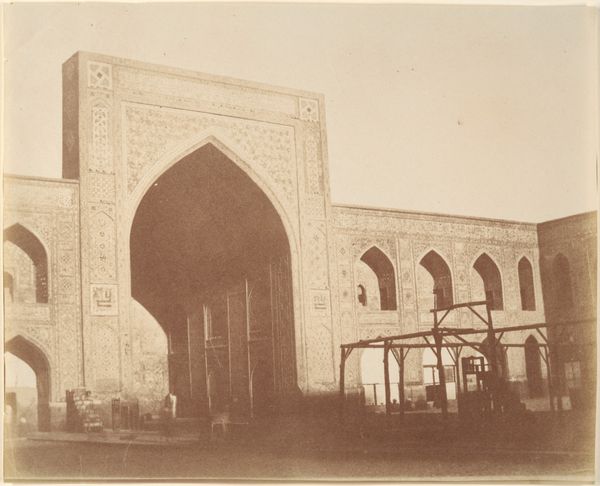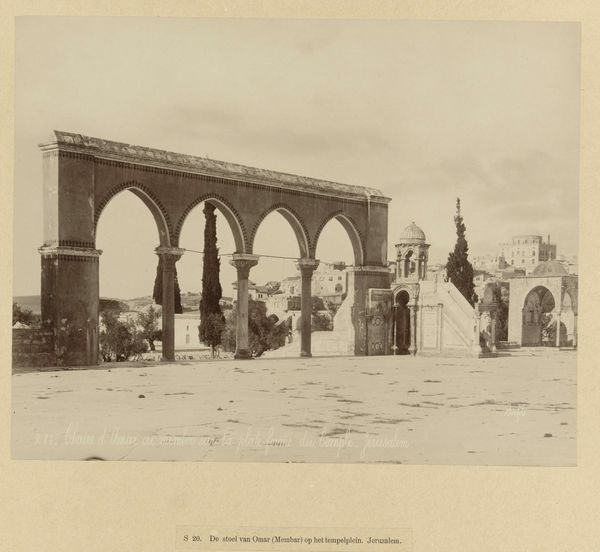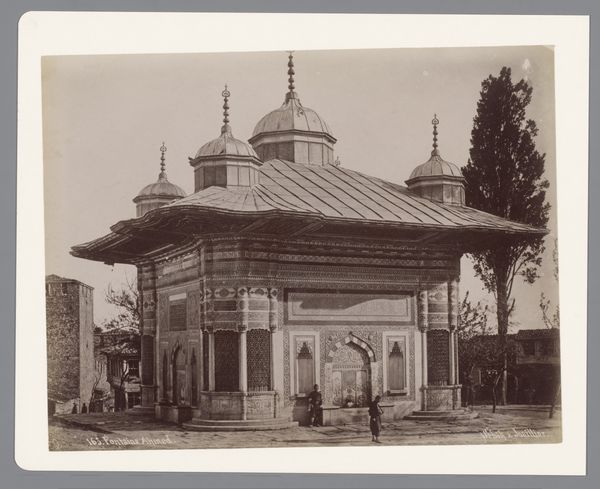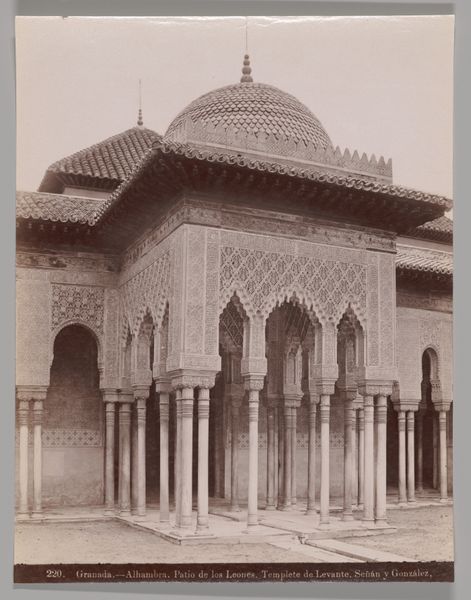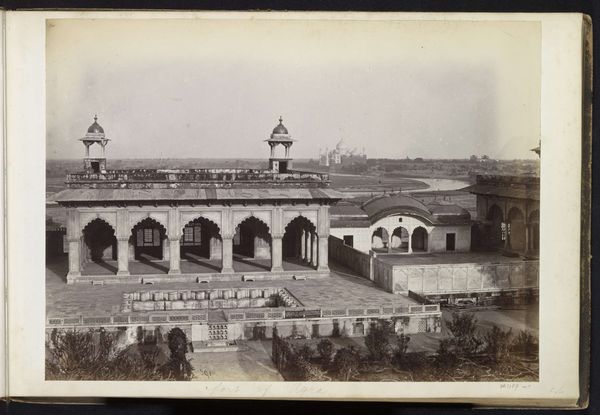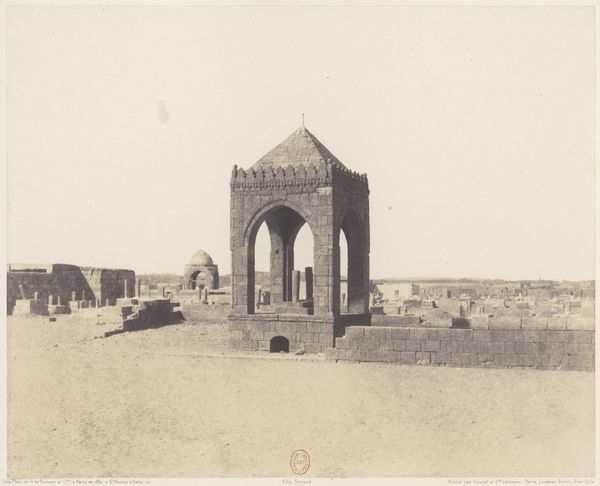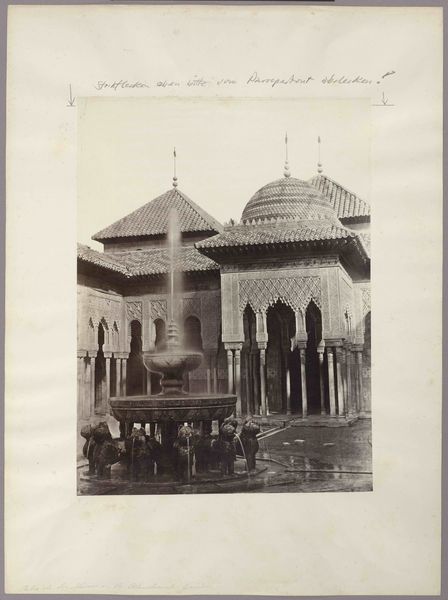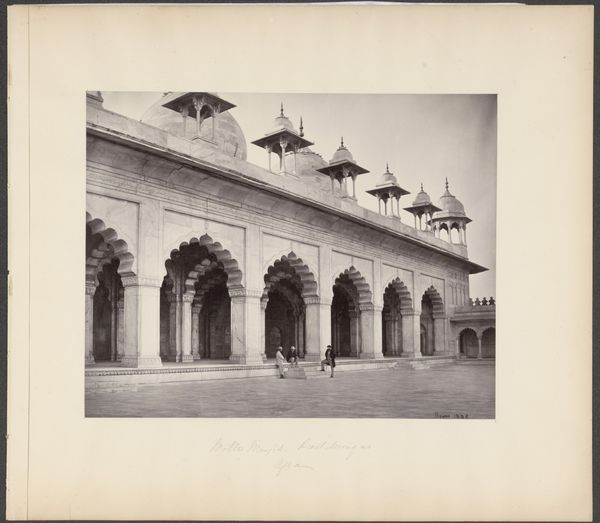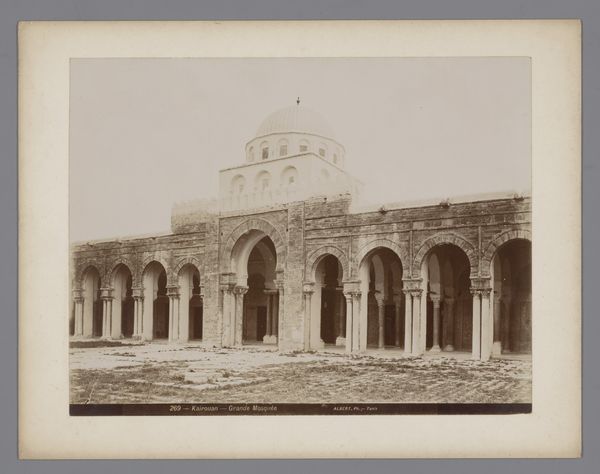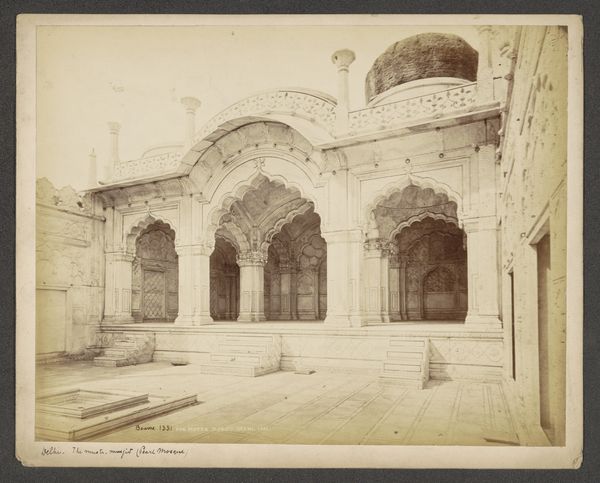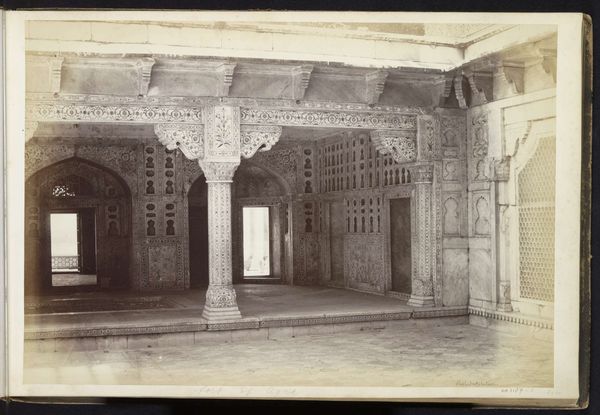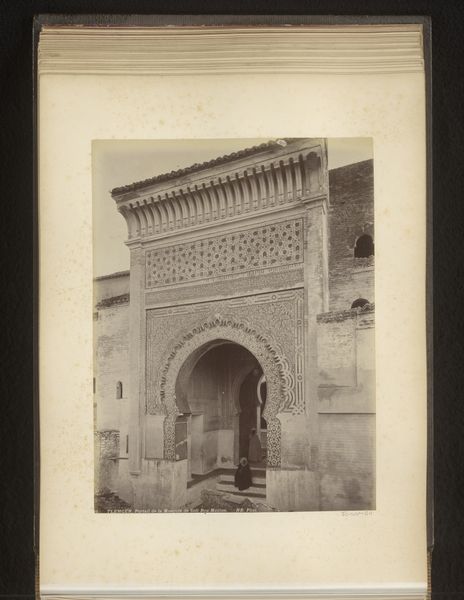
print, photography
#
faded colour hue
#
historical design
#
pale palette
#
muted colour palette
#
photo restoration
# print
#
white palette
#
photography
#
historical fashion
#
unrealistic statue
#
framed image
#
orientalism
#
cityscape
#
islamic-art
#
soft colour palette
Dimensions: height 210 mm, width 270 mm
Copyright: Rijks Museum: Open Domain
Editor: This photograph, "Tophane fontein in Istanboel" by Sébah & Joaillier, taken between 1888 and 1900, is a fascinating look into the past. It's a print, and the light is beautiful. I find the detail on the fountain itself really striking, but I'm curious, what catches your eye when you look at this? Curator: I am immediately drawn to the photograph's capacity to reveal the social context of its production. This wasn't simply about aesthetic representation, it’s about the studio of Sébah & Joaillier marketing an orientalized image to a Western audience. Notice how the architectural details of the fountain, though intricately crafted from stone, are flattened into a consumable image. Editor: Consumable image? Curator: Precisely. The photographic print, a mass-producible item, transformed this public work, the fountain itself, into a commodity. The clothing, too. And how is that consumption supported? We could consider the labor involved: from the photographers, to the printers, and even the local people who appear in the shot. How did their presence in the photograph impact the economics of representation at the time? Editor: That's a perspective I hadn't considered. I was mostly looking at the style and the... exoticism, I suppose. But you're right, the image itself is an object produced with labor and intent for specific markets. Curator: Think about the materiality of the print itself. It is not just an image, but an object made by a process of selection, exposure, development and printing. Each step shaped by human intervention and reflecting economic and cultural agendas. What stories about labour do the physical characteristics of the print -- the fading colours, the paper it's printed on -- whisper to you? Editor: This really highlights how looking at materials and processes can unlock so much about the context of a work! Thanks, this has definitely given me a richer appreciation.
Comments
No comments
Be the first to comment and join the conversation on the ultimate creative platform.
